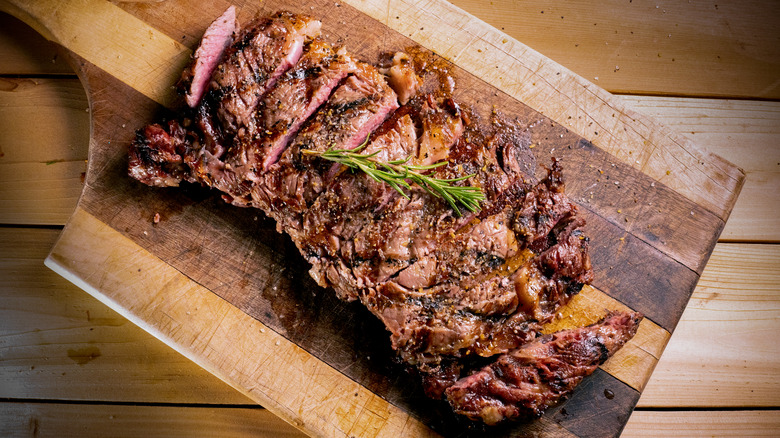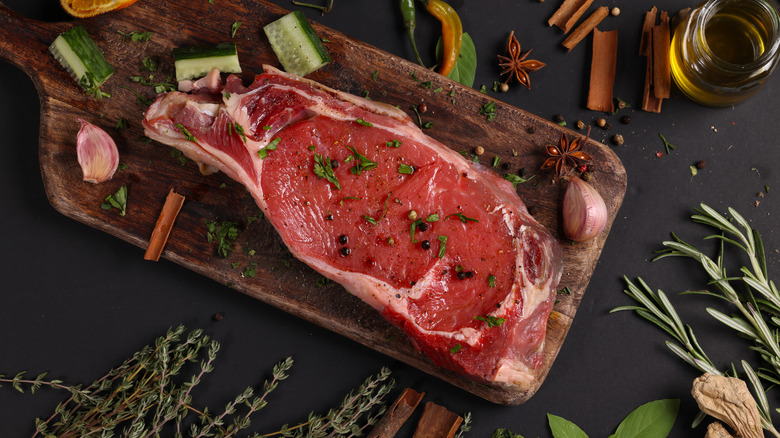The Leaner Cut Of Steak You Can Use In Place Of Ribeye
Ribeye is one of the most flavorful, beefy steaks you can make, but if you are looking for something good at a fraction of the price, there is a leaner cut of steak that can take its place and still satisfy. Coming from the top of the rib, ribeye's two big selling points are its rich flavor and excellent marbling that produces a tender steak. It may not be an exact replication, but with the right cooking technique, you can turn another intensely flavored cut of steak into something nearly as juicy — rump steak.
A rump steak (which is also sometimes called a round steak or bottom round) is cut from the rear of the cow. That larger section is called the round, and the variety of cuts it produces are lean and tough; however, they are quite tasty and incredibly affordable. Normally because of its toughness, a rump steak would be popular for stews and braises, but you can utilize different forms of tenderization — like marinating — to account for the cut's downsides. You can then cook your rump steak by searing it on the stove, the same way you would a ribeye.
Tenderize a rump steak for an affordable ribeye replacement
If you want to turn that rump cut into a sliceable slab of steak, it's going to take some time, but you have a few options. The most basic is a meat mallet, which will tear up the rump's tough muscle fibers. It's a decent, quick option that works best if you are going to be cooking a thinner steak.
If you want to keep your flavors simple, a dry brine done by rubbing salt on the outside of the steak will absorb into the meat, which dissolves the proteins and helps keep the steak juicy. Marinades can do the same thing; just make sure they include an acidic element like citrus, wine, or vinegar because that is what will tenderize the steak. For a cut as tough as rump steak, either option will need to tenderize your meat for at least a few hours or even overnight.
You can also go further and use a slow-cook method. Either using a sous-vide or braising your steak until it's just short of your target temperature will break down the muscles and keep your steak moist. Once you are done with any of these methods, pat the steak dry and sear it quickly in a pan to get a nice brown crust, then slice your rump steak against the grain. Tenderize with the proper care, and you might not even notice that your low-cost rump steak isn't a pricey ribeye.

